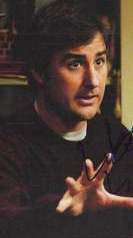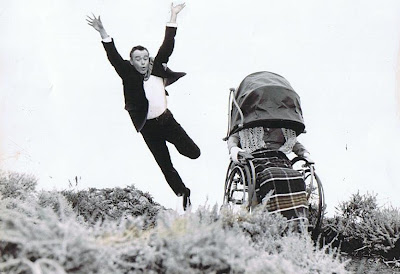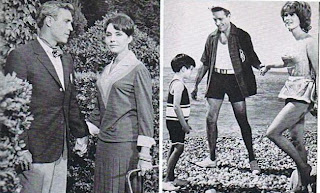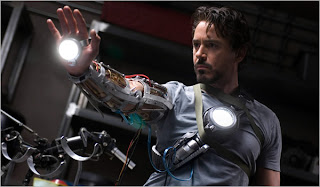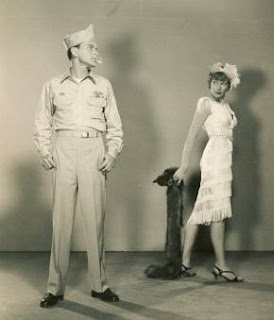Note: This is a regular monthly feature, highlighting, well, the highlights on Turner Classics' schedule. Why? Simple. Because Turner Classics remains a veritible college education in film.

As celebrated as Frank Sinatra had been in his life, he was also somewhat underrated. It was simply a matter of a performer being so good at so many things that some people, even those who should have known better, took him for granted - because he made it look so very easy.
This shortsightedness should be remedied as Turner Classics devotes its schedule on Sunday and Wednesday nights this month not only to Sinatra movies but also to Sinatra concerts. Get ready to be impressed.
Maybe even for the first time.
May 1: The month kicks off with an early-morning screening of Walter Forde’s British-made “Charley’s Big-Hearted Aunt,” the umpteenth version of Brandon Thomas’ durable play, “Charley’s Aunt.” For fun, stay tuned for Frank Capra’s remake of his “Lady for a Day” - “Pocketful of Miracles,” which feels like a musical without music – and Blake Edwards’ efficient, highly creepy “Experiment in Terror,” in which Glenn Ford feverishly tries to stop psycho Ross Martin from literally breathing down Lee Remick’s neck.
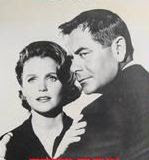 May 2:
May 2: Only a filmmaker as secure and original as Eric Till would have cast Peter Ustinov and Maggie Smith, an eclectic duo if there ever was one, in “Hot Millions,” adding the acerbic Bob Newhart for good measure. Then there are two with Bing – “High Society, in which he gets to croon (memorably) with Frank S., and the very fine “The Country Girl,” in which he gives arguably his best performance ever as an alcoholic, duplicitous actor being given a second chance. Grace Kelly won the Oscar as his put-on wife here and, although Judy Garland’s blindly loyal fans may disagree, Kelly deserved the award. (Garland was nominated the same year for George Cukor’s elephantine downer, “A Star Is Born.”) “The Country Girl” is currently on Broadway with Morgan Freeman, Frances McDormand and Peter Gallagher (in the Bill Holden role).
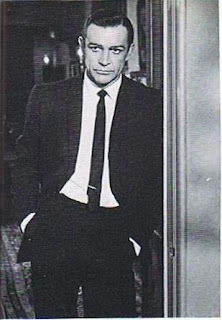 May 3:
May 3: “Marnie” – Hitchcock’s sexiest film, thanks to the commanding, studly presence of Sean Connery and the little-girl wispiness of Tippi Hedren. Plus John Huston’s garish, colorful, never boring “Moulin Rouge.”
May 4: More Hitch and Tippi: “The Birds.” Plus the two Shirleys (Booth and MacLaine) in Joseph Anthony’s version of Thorton Wilder’s “The Matchmaker,” Novak and Douglas steaming things up, most memorably, in Quine’s “Strangers When We Meet,” “Torch Song,” with classic Joan Crawford, and the Mervyn LeRoy-Sinatra tolerance short, “The House I Live In.”
 May 6:
May 6: Two by Pressburger-Powell - “I Know Where I’m Going,” with Wendy Hiller and “Age of Consent,” teaming Helen Mirren, in her first film, with James Mason. Delmer Daves directs Sinatra opposite Tony Curtis and Natalie Wood in “Kings Go Forth.
May 8: “Never So Few.” Sinatra. Directed by John Sturges. Backed by Gina Lollobrigida and Steve McQueen. Plus “None But the Brave.” Sinatra. Directed by Sinatra.
 May 9:
May 9: Annie Potts makes a delightful, eccentric presence as an offbeat young prostitute in Matthew Robbin’s unfairly overlooked
“Corvette Summer.”
Tennessee Williams receives arguably his best screen adaptation ever in Richard Brooks’ version of “Sweet Bird of Youth,” with Paul Newman as hustler Chance Wayne and Geraldine Page as desperate, aging movie star Alexandra Del Lago. Newman also pops up in Robert Wise’s “Until They Sail,” in which Jean Simmons, Joan Fontaine, Piper Laurie and (in her screen debut) Sandra Dee play Australian sisters. Plus Ranald MacDouglall’s “The World, The Flesh and The Devil,” in which only Harry Belafonte, Inger Stevens and Mel Ferrer survive a nuclear disaster.
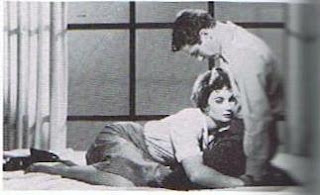 May 10:
May 10: “Trapeze,” seedy fun and Eurotrash ambience with Burt Lancaster, Tony Curtis and Gina Lollobrigida, all provocatively dressed in skin-tight leotards. Directed by Sir Carol Reed.
May 12: Frank Loesser’s “Guys and Dolls” receives rather arch screen treatment at the hands of Joseph L.Mankiewicz but, you know, I’m starting to think the problem is the material itself. No one speaks with contractions here and it becomes annoying after the first ten minutes. Sinatra is really in his element here, but oddly enough, he’s upstaged by non-singers Marlon Brando and Jean Simmons who are surprisingly good and vocally fine. Plus Hitchcock’s “The 39 Steps.”
May 13: Curtis Bernhardt’s “The Merry Widow,” with Lana Turner; the first version of “Enchanted April,” by Harry Beaumont, and Dennis Morgan and Eleanor Parker in Delmer Daves' “The Very Thought of You.”
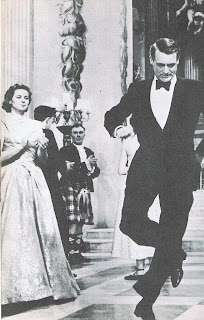 May 14:
May 14: Wallow in Stanely Donen’s sophisticated “Indiscreet,” with Cary Grant and Ingrid Bergman, plus two Sinatra comedies, Charles Walters’ popular “The Tender Trap,” with the top-notch cast of David Wayne, Debbie Reynolds and Celeste Holm, and Jack Donohue’s difficult-to-see “Marriage on the Rocks,” co-starring Deborah Kerr and Dean Martin. Meanwhile, Doris and Rock rock in “Lover Come Back.”
May 15: Sinatra’s “High Society,” also directed by Walters, gets a repeat showing, followed by Stanley Kramer’s misguided “The Pride and the Passion,” with Cary Grant and Sophia Loren, and Frank Capra’s endearing “A Hole in the Head,” which offers up Edward G.Robinson and Thelma Ritter as Sinatra’s brother and sister-in-law and Carolyn Jones and Eleanor Parker as his love interests.
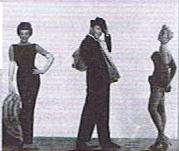 May 15:
May 15: “Dirty Dingus Magee” by Burt Kennedy. This was supposed to be Sinatra’s last film. It’s not good. Luckily, he followed it up with a first-rate TV movie, “Contract on Cherry Street,” and the theatrical film, “The First Deadly Sin,” opposite Faye Dunaway. Much better. Plus Hitchcock’s “Shadow of a Doubt.”
May 16: Peter Hyam’s compelling “Capricorn One,” about a faked shuttle launch to Mars. Two with Henry Fonda, directed by Burt Kennedy – the comedy “The Rounders,” co-starring Glenn Ford, and the very dark “Welcome to Hard Times,” with Janice Rule.
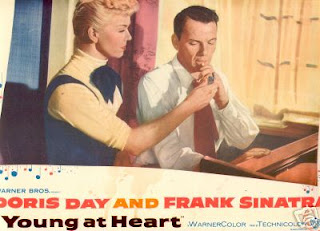 May 17:
May 17: “The Hunger,” Tony Scott’s very chic vampire romp with David Bowie, Catherine Deneuve and Susan Sarandon.
May 18: “The Party,” Blake Edwards’ antic (and hilarious) farce about a party unwittingly sabotaged by Peter Sellers’ dense Indian actor. (Can anyone else see this as a remake with Steve Carrell?) Plus John Rich’s “Boeing Boeing,” the Tony Cyrtis-Jerry Lewis comedy based on the British stage farce that’s back on Broadway; George Marshall’s “The Mating Game,” in which perennial second banana Tony Randall gets to play leading man opposite Debbie Reynolds, and George Sidney’s revamped version of Rodgers and Hart’s “Pal Joey,” with Sinatra playing Sinatra and San Francisco as itself. Plus Hayworth, Novak and a fab score.
 May 19:
May 19: Doris Day joins Sinatra in Gordon Douglas “Young at Heart,” a quasi-musical remake of “Four Daughters.” Two of our best pop singers ever – for the first and only time – on screen together. The wonderful supporting cast includes Gig Young and Elisabeth Fraser, who would join Day in Gene Kelly’s “Tunnel of Love,” Robert Keith, Ethel Barrymore, Dorothy Malone, Alan Hale, Jr. and Lonny Chapman.
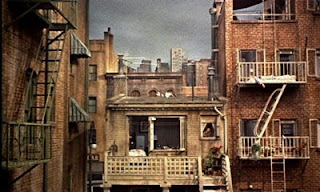 May 20:
May 20: A must-see: Ken Loach’s revolutionary 1966 British TV film, “Cathy Come Home,” with Carol White and Ray Brooks as a young married couple whose life together spirals downward as lost jobs and strained finances lead them down the nowhere path of homelessness. Loach, a social advocate, had previously directed the TV version of “Up the Junction,” which dealt head-on with abortion. (It was subsequently adapted into a 1968 film by Peter Collinson with Suzy Kendall.) His is a verité style that never stoops to theatricality. “Cathy Come Home” is harsh and tough to watch. But you must.
Plus, a day with Jimmy Stewart – two by Hitchcock, “Vertigo” and “Rear Window,” Ford’s “The Man Who Shot Liberty Valence” and Preminger’s “Anatomy of a Murder.”
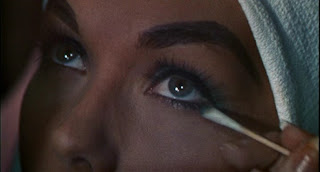 May 21:
May 21: Frank and his Rat Pack/The Clan in Lewis Milestone's accidental classic,
“Ocean’s Eleven.”
It may be only so-so, but it's cool as hell. Plus "Sergeant's Three," the Rat Pack version of "Gunga Din." John Sturges directed.
May 22: Frank and company also got together for the disposable “4 for Texas,” directed by Robert Aldrich of all people. And the masterwork of the Sinatra film collection - Vincente Minnelli's compulsively watchable “Some Came Running,” in which there isn't a single bad performance. Frank is especially first-rate here.
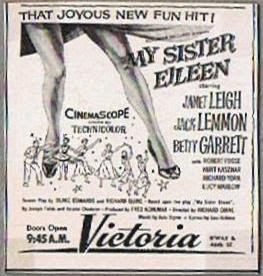 May 23:
May 23: Spielberg's notorious flop, “1941,” is actually pretty good - in "It's a Mad, Mad, Mad, Mad World" sort of way. The USO dance sequence is a standout and implies that the film itself should have been a musical. Jack Lemmon shows up in two of his more entertaining films - Richard Quine's “My Sister Eileen,” with a pleasing Jue Styne-Leo Robin score and early Bob Fosse choreography (before it became terminally mannered), and Arthur Hiller's “The Out-of-Towners,” with Sandy Dennis, surprisingly, in peak comic form. This film, hastily dismissed, has grown with age.
May 27: Curious Cliff Robertson line-up - David Swift's “The Interns,” with an all-star, no star cast; Peter Tewkesbury's “Sunday in New York,” with Rod Taylor in the role Robert Redford created on stage; Alexander Singer's Lana Turner soap, “Love Has Many Faces” and Robert Aldrich's atmospheric “Autumn Leaves” with a fine Joan Crawford.
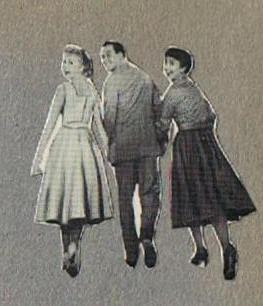 May 28:
May 28: Don't miss Don Siegel's hard-hitting “The Line-Up,” which inspired the TV series and stars Eli Wallach and Robert Keith in rare leading roles, and Robert Parrish's terrific "The Mob," with Broderick Crawford and Richard Kiley. More from Parrish - “Duffy," with James Coburn as a gentleman crook. James Fox and James Mason co-star. The surefire Sinatra line-up, all dramatic, includes Preminger’s “The Man with the Golden Arm,” Frankenheimer's “The Manchurian Candidate” and Kramer's “Not as a Stranger.” Frank's train scene with Janet Leigh in "The Manchurian Candidate" is a piece of superb, subtle screen acting.
May 29: Sinatra compellingly cast as a would-be presidential assassin in Lewis Allen's “Suddenly.”
May 30: Two by Roy Ward Baker - John Gregson in a drama of family and alcoholism, “Jacqueline,” and “The Singer Not the Song,” about a priest trying to bring religion to a small town. Dirk Bogarde, Jon Mills and Mylene Demongeot star. Plus, Mark Robson's “The Seventh Victim,” in which Kim Hunter, out to locate her sister, falls in with satanists.
And that's it. I've just one, final question: Where is the Don McQuire Western, "Johnny Concho" among Sinatra's films? It hasn't been seen in ages, which is too bad as Sinatra rather convincingly plays a sniveling coward living in the shadow of his brother, a notorious killer, and throwing his weight around because of his sibling's intimidating reputation.
(
Artwork: Definitive Sinatra; Remick and Ford in "Experiment in Terror," Connery in "Marnie," Novak and Douglas in "Strangers When We Meet," Newman and Page in "Sweet Bird of Youth," Newman and Simmons in "Until They Sail," Bergman and Grant in "Indiscreet," Hayworth, Sinata and Novak pose for a publicity still for "Pal Joey," Day and Sinatra on a lobby card for "Young at Heart," Brooks and White in "Cathy Come Home," the courtyard set for Hitchcock's "Rear Window," Novak is transformed in "Vertigo," a New Yorker magazine ad for "My Sister Eileen's" engagement at Gotham's now-shuttered Victoria Theater, and Betty Garrett, Lemmon and Janet Leigh in the film itself)

